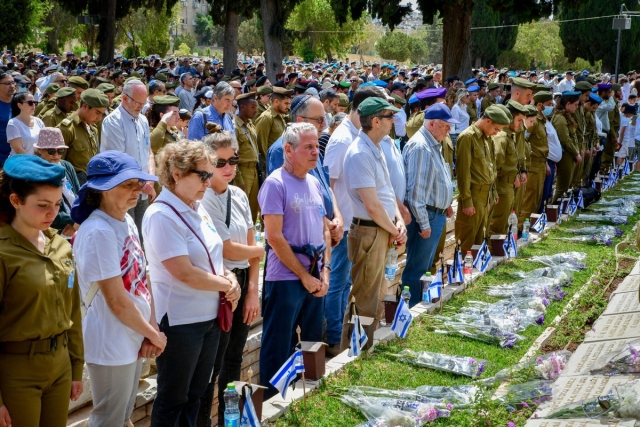In the aftermath of the unexpected terrorist attack originating from Gaza a week ago, the painstaking process of examining and identifying the victims has been underway. A total of 915 civilian bodies have been subject to scrutiny, and the task of identifying them has proven to be both challenging and emotionally taxing. As of now, over half of these individuals, precisely 532, have been successfully identified, while 432 have been cleared for burial. Forensic professionals involved in this grim task anticipate that the entire process of identification will be finalized by the week's end, though there is concern that a small number of bodies may remain unidentified due to their severely compromised condition.
The initial days following the outbreak of hostilities saw the identification process progressing at a slow pace. However, a significant turning point occurred with the intervention of the Institute of Forensic Medicine in Abu Kabir, which is Israel's foremost medical forensic center. Their involvement midweek resulted in a significant streamlining of the identification procedure. Concurrently, the management of this solemn event has been entrusted to multiple government entities, including the police, the Home Front Command, and the Chief Rabbinate, albeit with some accompanying logistical challenges.
בקשה חשובה של משפחתו של גיבור ישראל אלחנן קלמנזון ז״ל, ואז אתאר את סיפור גבורתו הבלתי נתפסת
— Naftali Bennett בנט (@naftalibennett) October 14, 2023
הבקשה (של מספר משפחות נופלים או נרצחים): כל מי שיש בידו טלפון סלולרי שמצא בשטח הלחימה/טבח, שיחבר להטענה וידליק, וכך משפחות נופלים וחללים יוכלו להשיג את הטלפון של יקיריהם.
יש ככל הנראה… pic.twitter.com/pgzOUSsdDT
The critical task of identifying and preserving the bodies is being carried out at the "Shora" camp of the military rabbinate, situated near Ramla. This relatively new and extensive facility, established just a few years ago, came at a considerable cost, approximately 80 million NIS, as part of disaster preparedness measures.
However, personnel working on-site have noted certain design deficiencies within the facility, primarily its limited suitability for tasks other than storage and preservation. One notable issue pertains to how the bodies are positioned on stretchers, making it arduous for forensic experts to perform accurate examinations for identification purposes. To address these concerns, Prof. Nachman Ash, the former director-general of the Ministry of Health, has been appointed to coordinate Ministry of Health operations at the Shura facility in recent days.
Dr. Chen Kugel, the director of the Institute of Forensic Medicine in Abu Kabir, remarked, "In the initial two or three hours, once the magnitude of this tragedy became apparent, we recognized that the response would center around the Shura camp of the military rabbinate. Despite the facility's size, it was unprepared for dealing with such a substantial number of casualties, necessitating the utilization of additional containers for storage in addition to the existing facility."
Dr. Kugel continued, "As time progresses, the challenges grow more daunting. Some bodies are so severely burned that they have turned into little more than coals. Tragically, there will be bodies that may never be recovered. This is a monumental event, and in such instances, a small number may remain unidentified. However, we are committed to completing the identification process for the vast majority within the coming days, with the aim of concluding it by week's end."
נ ק מ ה
— מירב חגאג (@meravhgag) October 7, 2023
בסיוטים הכי גדולים לא דימינו על דבר כזה
התקשורת לא תראה לכם.
ברשתות הערביות מדברים על אונס.
סרטונים של התעללות בגופות ילדים.
"לָמָּה יֹאמְרוּ הַגּוֹיִם אַיֵּה אֱלֹהֵיהֶם יִוָּדַע בַּגּוֹיִם לְעֵינֵינוּ נִקְמַת דַּם עֲבָדֶיךָ הַשָּׁפוּךְ."
עשרות גופות של נרצחים יהודים pic.twitter.com/dFM8jeHqdI
Dr. Kugel concluded with a poignant reflection, stating, "I have been a forensic doctor for 31 years, and I have never witnessed such horrors. This is unspeakable cruelty – pure evil. It's not just a professional challenge; it's also profoundly human. People are working tirelessly around the clock, and amidst this tragic endeavor, we encounter unimaginable stories that touch our hearts."


